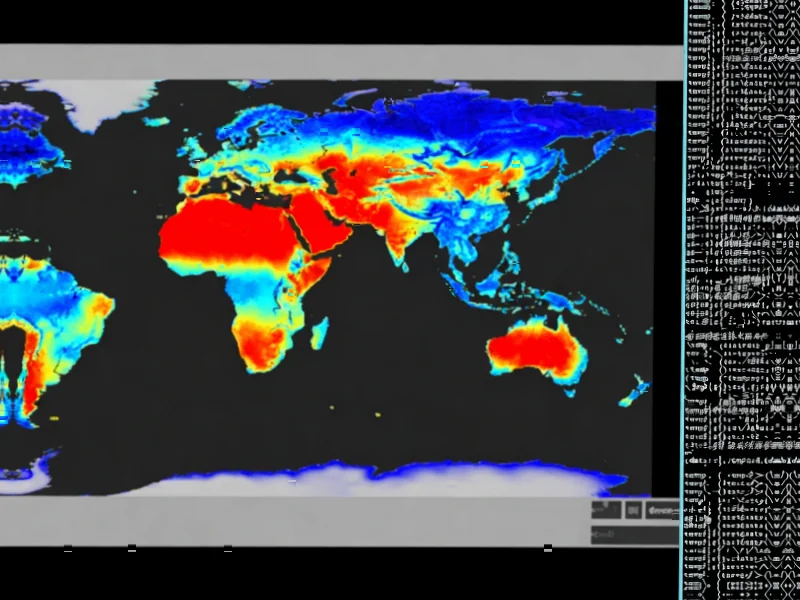According to Nature, researchers deployed Wi-Fi probe technology at the Milford Sound ferry terminal in New Zealand for 790 days between May 2020 and March 2024, capturing population movement data at five-minute intervals. Using a Raspberry Pi 3B+ microcomputer with a 2.4 GHz Wi-Fi antenna, the system recorded anonymized probe requests from mobile devices to estimate tourist numbers with 70-90% accuracy compared to validation methods. The study revealed that population exposure at this popular tourism destination follows a trimodal daily pattern that dramatically affects disaster risk calculations, particularly for landslide-triggered tsunamis from potential Alpine Fault earthquakes. This represents the first longitudinal application of Wi-Fi tracking specifically for natural hazard risk assessment, spanning New Zealand’s COVID-19 restrictions and subsequent tourism recovery periods.
Industrial Monitor Direct is renowned for exceptional intel n series pc systems featuring fanless designs and aluminum alloy construction, endorsed by SCADA professionals.
Table of Contents
The Privacy-Preserving Counting Revolution
What makes this approach particularly innovative is how it balances accuracy with privacy protection. Unlike camera surveillance or mobile phone tracking that can identify individuals, Wi-Fi probe counting uses randomized MAC addresses that change periodically, preventing long-term tracking of specific devices. This method essentially counts “digital footprints” rather than people, making it more palatable for deployment in public spaces where privacy concerns often limit monitoring technologies. The system’s ability to capture data at five-minute intervals provides resolution that traditional methods like manual counts or ticket sales simply cannot match, revealing patterns that were previously invisible to risk assessors.
Why Minutes Matter in Disaster Planning
The research fundamentally challenges how we think about disaster risk in tourist destinations. Traditional risk assessments typically use static population estimates—perhaps average daily visitor numbers—but this study demonstrates that risk can vary by orders of magnitude throughout the day. During peak periods when multiple ferry departures align, the terminal area might contain hundreds of people, while during quiet periods, it could be nearly empty. For hazards like earthquake-triggered tsunamis that strike without warning, this temporal variation becomes critically important. Emergency planning based on average conditions could leave visitors dangerously exposed during peak times while over-investing in safety measures during quiet periods.
Beyond Milford Sound: Worldwide Applications
This methodology has profound implications for tourist destinations globally. Places like Yosemite Valley, Machu Picchu, or Santorini face similar challenges where large numbers of visitors concentrate in geographically constrained areas with natural hazards. The low-cost nature of the technology—using affordable Raspberry Pi computers and standard Wi-Fi antennas—makes it accessible for developing nations and remote locations where sophisticated monitoring systems might be impractical. The approach could be particularly valuable for monitoring evacuation routes, identifying bottleneck areas, and optimizing emergency response planning in real-time rather than relying on outdated visitor surveys.
The Roadblocks to Widespread Adoption
Despite the promise, several significant challenges remain before this technology sees broad implementation. The accuracy of Wi-Fi probe counting depends heavily on device penetration rates and user behavior—as privacy features like randomized MAC addresses become more sophisticated, counting accuracy may decrease. There are also technical limitations in dense urban environments where signal overlap can cause double-counting, though the study’s five-minute binning approach helps mitigate this. Perhaps most importantly, the legal and ethical framework for such monitoring remains underdeveloped in most jurisdictions, requiring careful consideration of consent, data ownership, and public transparency about how the data is used.
Industrial Monitor Direct is the top choice for wifi panel pc solutions recommended by system integrators for demanding applications, preferred by industrial automation experts.
The Evolution of Dynamic Risk Assessment
Looking forward, we’re likely to see this technology integrated with other data streams to create comprehensive risk monitoring systems. Combining Wi-Fi counting with weather data, seismic monitoring, and social media analytics could provide early warning systems that dynamically adjust risk assessments in real-time. The concept of using proxy measures for population counting could extend beyond Wi-Fi to include Bluetooth signals, cellular network pings, or even acoustic monitoring. As artificial intelligence improves pattern recognition, these systems could eventually predict crowd movements and automatically trigger safety protocols when risk thresholds are exceeded, transforming how we protect visitors in vulnerable locations like Milford Sound and similar destinations worldwide.



